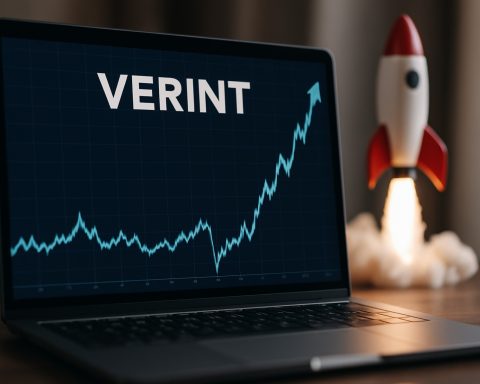- Atmus Filtration Technologies reported a 2.5% revenue increase to $1.67 billion in 2024, post-Cummins transition.
- The company’s technological expansion includes the launch of the NanoNet N3 product portfolio, boosting its competitive edge in fuel filtration.
- Atmus’s aftermarket segment outperformed the market by two percentage points, showcasing its resilience.
- Facing challenges like softening demand, Atmus undertook a $4 million restructuring effort, focusing on employee severance in the US and China.
- Strong foreign exchange fluctuations and unpredictable freight activity present additional hurdles.
- The company remains optimistic, anticipating a strong recovery in the second half of 2025 through strategic alliances and pricing strategies.
Atmus Filtration Technologies has navigated a tumultuous financial landscape, delivering a sturdy performance despite global economic headwinds. The company’s revenue climbed to $1.67 billion for the year 2024, marking a 2.5% increase. A fresh breeze of independence fueled this growth as Atmus completed its seamless transition from Cummins, bolstering its independent stride.
In a world where markets often teeter on uncertainty, Atmus strategically expanded its technological arsenal. The launch of the NanoNet N3 product portfolio has elevated their fuel filtration prowess, securing a decisive edge over competitors. Their aftermarket segment thrived, outpacing the broader market by two percentage points, proving their resilience and adaptability.
Despite this solid footing, the path ahead is fraught with challenges. The company braces itself against softening demand in both aftermarket and first-fit sectors, prompting prudent cost-cutting measures. A $4 million restructuring effort concentrated on employee severance in the US and China, signaling decisive action in turbulent times. The financial landscape is further clouded by strong foreign exchange winds and unpredictable freight activity.
Yet, amidst these challenges, Atmus’s leadership glimmers with cautious optimism. The company anticipates a robust second-half recovery in 2025 driven by strategic alliances and steadfast confidence in their growth prospects. Careful pricing strategies, especially regarding volatile steel prices, underscore their adaptability.
In a world of shifting sands, Atmus Filtration Technologies emerges not just as a survivor, but as a forward-thinking pioneer, ready to adapt, innovate, and flourish. Their story reminds us: resilience and strategic foresight make all the difference.
Riding the Winds of Change: How Atmus Filtration Technologies Thrives Amidst Global Challenges
How-To Steps & Life Hacks for Business Adaptation
1. Embrace Independence: Just as Atmus successfully separated from Cummins, businesses can benefit from fostering autonomy. Evaluate areas where independence can enhance flexibility and decision-making.
2. Innovation is Key: With the launch of their NanoNet N3 product portfolio, Atmus highlights the importance of innovation. Encourage your R&D department to explore new frontiers that can distinguish your products in the market.
3. Aftermarket Focus: Atmus outperformed the broader market in the aftermarket segment, illustrating the potential of this untapped area. Look into developing aftermarket services or products to stabilize revenues against fluctuating new product demands.
Real-World Use Cases
– Fuel Filtration: The NanoNet N3 product portfolio demonstrates substantial improvements in filtration efficiency. This technology can be applied across various industries, including automotive, manufacturing, and power generation, to enhance equipment longevity and performance.
– Cost-Cutting Measures: Atmus’s restructuring in reaction to demand softening showcases the strategic use of operational adjustments. Industries facing similar issues might consider workforce optimization or technology investments that boost long-term efficiency.
Market Forecasts & Industry Trends
The filtration industry is anticipated to face growing demand as environmental regulations tighten and green technology takes precedence. According to a report by MarketsandMarkets, the filtration and separation market size is projected to reach $115 billion by 2025. Atmus’s continued innovation positions it well to capitalize on these trends.
Reviews & Comparisons
The NanoNet N3 product line competes strongly with industry giants like Donaldson and Parker Hannifin. Reviews from industry professionals highlight its superior filtration efficiency and reduced need for maintenance, giving Atmus a competitive edge.
Controversies & Limitations
– Economic Pressures: Atmus faces challenges related to fluctuating steel prices and currency exchange rates that could affect profitability.
– Restructuring Backlash: The $4 million restructuring initiative might raise concerns among employees and stakeholders about workforce morale and future job security.
Features, Specs & Pricing
– NanoNet N3 Portfolio: Features include enhanced particle capture efficiency, extended filter lifespan, and compatibility with various fuel systems. Pricing is competitive compared to similar high-end offerings from other leading brands.
Security & Sustainability
Atmus is committed to sustainable operations, incorporating eco-friendly materials and reducing environmental impact. Implementing energy-efficient production methods and a rigorous waste management program is central to the company’s ethos.
Insights & Predictions
Experts predict that Atmus will continue to strengthen its position in the global market by leveraging strategic partnerships and further expanding its technological capabilities. Keeping an eye on emerging markets and developing localized solutions could be the next logical step for expansion.
Tutorials & Compatibility
– Product Integration: Atmus offers guidance on integrating their filtration systems into existing setups, underscoring the importance of compatibility and adaptability.
– Maintenance Instructions: Detailed instructions on maintaining the NanoNet N3 systems ensure optimal performance and longevity.
Pros & Cons Overview
Pros:
– Innovative product offerings
– Strong aftermarket presence
– Strategic cost management
Cons:
– Exposure to volatile raw material costs
– Potential workforce discontent due to restructuring
Actionable Recommendations
– Diversify Revenue Streams: Explore new markets or product lines to mitigate risks from market fluctuations.
– Focus on Sustainability: Adopt environmentally friendly practices not only to mitigate regulatory impacts but also to appeal to the eco-conscious consumer base.
– Employee Engagement: After restructuring, focus on building employee morale and fostering a positive work environment to maintain productivity.
For more information about Atmus Filtration Technologies, visit their official website.
By aligning your business strategy with these insights, you can cultivate resilience and drive growth even in unpredictable markets.










